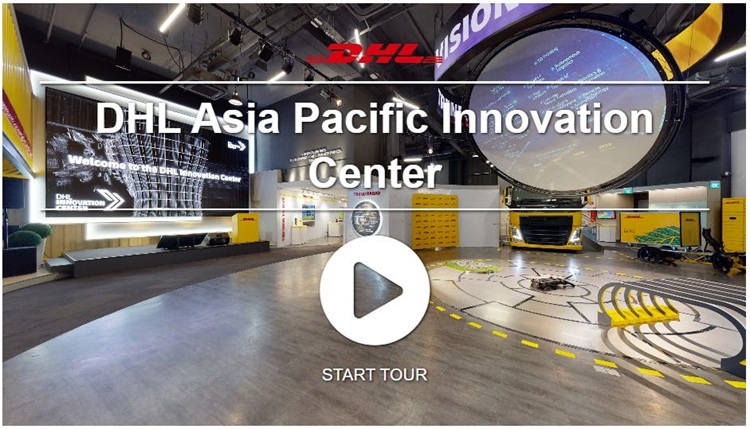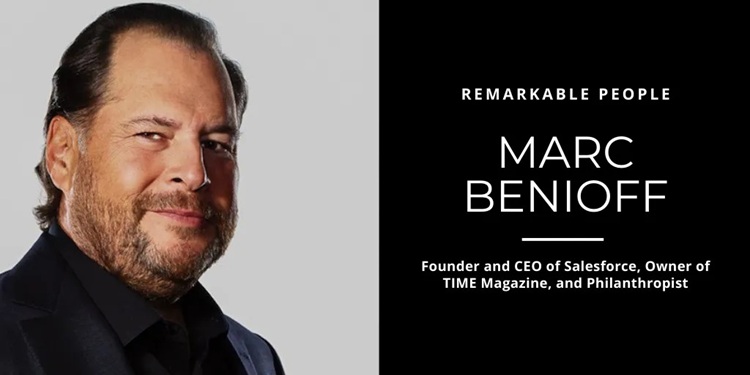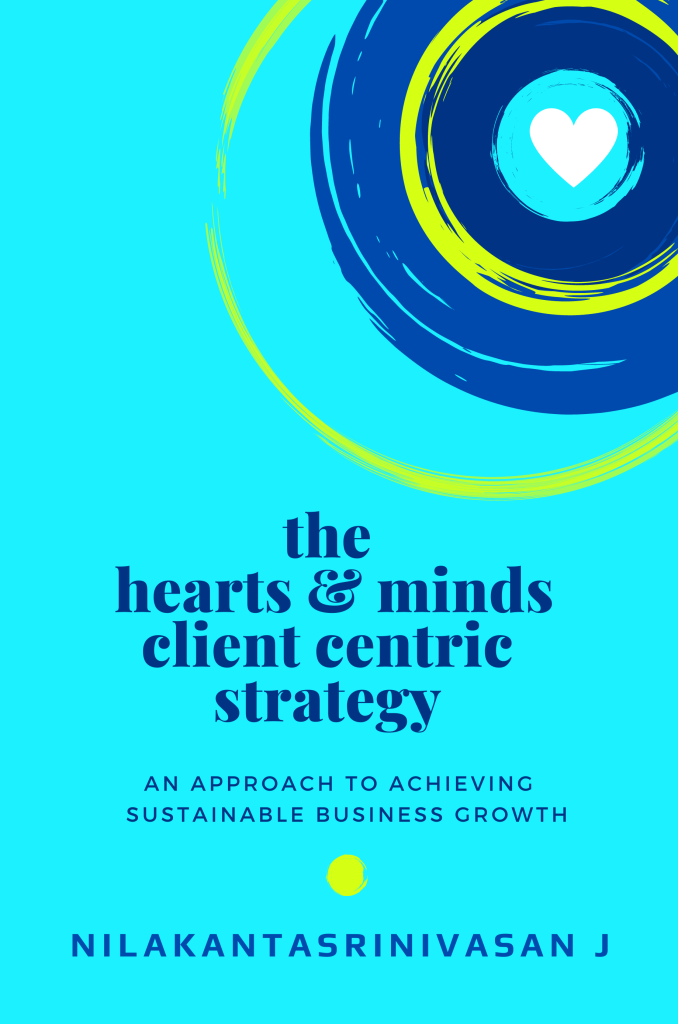Learn to create SOAR Matrix with live business examples
In today’s high-stakes B2B landscape, predicting change isn’t enough — leading it is the mandate. Yet too often, most organizations approach strategic planning like a checklist driven activity.
Further, most strategic planning processes lay too much emphasis on aspects such as threats, weaknesses and risks. While it is important to evaluate the deficiencies and challenges, overly emphasizing on these leads to the creation of defensive strategies.

That’s where the SOAR Matrix flips the narrative.
SOAR—short for Strengths, Opportunities, Aspirations, and Results—is a strategic planning framework built for businesses that want to scale with intention and impact. Unlike its better-known cousin SWOT, SOAR doesn’t dwell on what’s broken—it amplifies what works and focuses on what’s possible.
It’s not just another planning tool; it’s a mindset shift for teams obsessed with client success, long-term value creation, and cross-functional alignment.
What is the SOAR Framework?
- Strengths: What the organization does well—core competencies, assets, and achievements
- Opportunities: External possibilities for growth, innovation, or market expansion
- Aspirations: Vision for the future—what the organization wants to become
- Results: Tangible outcomes that measure success and progress toward aspirations
Which organizations use SOAR Matrix?
There are many organizations that use SOAR matrix in their strategic decision making process. For example, Visa, John Deere, British Aerospace (BAE systems), US Army and many such large enterprises regularly use SOAR analysis. Many large consulting firms like McKinsey, Deloitte, PWC, Accenture, KPMG, etc, also this framework for their engagements.
Why leaders should use SOAR more regularly?
SOAR is useful because it doesn’t just analyze—it inspires. It’s built for leaders and teams who want more than situational diagnosis. By focusing on strengths and possibilities, SOAR aligns stakeholders, drives engagement, and fosters a growth mindset across organizations.
SOAR need not be used only a year during strategic planning. It should be part a leader’s tool-kit and should be during every day decision making. Here’s why it is a powerful tool for leaders:
- Encourages forward-thinking and innovation rather than deficiency mindset
- Builds shared vision and emotional commitment of the team
- Facilitates goal-setting rooted in core capabilities
- Strengthens organizational culture and collaboration towards a winning spirit
- Simple storytelling framework for leaders to influence stakeholders
When should B2B firms use SOAR?
SOAR is especially valuable in the following growth-critical scenarios:
- Cross-functional alignment for long-term goal
- Launching new product lines based on client feedback
- Entering new geographies or verticals with client co-creation
- Aligning cross-departmental teams with strategic account goals
- Conducting quarterly business reviews or renewal planning
- Repositioning brand for premium, value-based growth
- Designing CX programs tied to sales KPI
- Organizational transformation or culture change
- Leadership retreats and strategic offsites
How to Conduct a Client-Centric SOAR Analysis?
Conducting a SOAR analysis isn’t really difficult. All you need is good facilitation skills.
- Gather key stakeholders from diverse functions—strategy, marketing, operations, leadership, etc.
- If needed, you can involve key client decision makers too
- Host a facilitated workshop
- Ask 3 questions:
- What do we do best?
- What future excites us?
- What success looks like?
- Draft insights for each quadrant of the SOAR Matrix
As a part of our strategic engagements with our clients, we facilitate and help our clients develop SOAR matrix.
TESLA and NVIDIA Examples
Here are a few SOAR matrix examples of Tesla and NVIDIA that I have created for you to understand the concept better.
SOAR Matrix Example 1 : Tesla’s Entry into India
Here’s how Tesla’s move into India can be framed with a growth lens.
Strengths
- Globally recognized brand with premium EV tech
- Experience in setting up Gigafactories
- Advanced autonomous systems and battery innovation
- Charismatic leadership with global influence
Opportunities
- India’s EV market projected to reach ₹35 lakh crore by 2035
- Government incentives like FAME-II and import duty concessions
- Rising urbanization and affluent middle class
- Potential for Indian Gigafactory as Southeast Asia export hub
Aspirations
- Become the leading premium EV brand in India
- Build a Gigafactory with 30% local value addition
- Launch an affordable EV tailored for Indian consumers
- Revolutionize India’s EV infrastructure and perception
Results
- Launch India-specific EV model by 2026
- Onboard 8,000 EVs annually under new import quota
- Achieve ₹7,500 crore turnover within five years
- Maintain NPS score above 70% across service touchpoints
SOAR Matrix Example 2 : NVIDIA’s AI Chip Strategy
NVIDIA’s dominance is built on a powerful combination of hardware innovation, software integration, and ecosystem control. However, rising competition from AMD, Intel, and custom silicon players (like Google’s TPU) is prompting NVIDIA to accelerate its roadmap and deepen client entrenchment.
Strengths
- Market leadership with 70–95% share in AI accelerators
- Flagship chips (H100, A100) widely adopted by tech giants like Google, Microsoft, and Amazon
- Proprietary CUDA software ecosystem creates developer lock-in
- High gross margins (~78%) and strong brand equity
Opportunities
- Surging demand for generative AI and LLM training
- Expansion into inference chips and edge AI devices
- Strategic partnerships with cloud providers and enterprise AI platforms
- Growth in simulation, robotics, and Omniverse applications
Aspirations
- Sustain innovation leadership by releasing new architectures annually
- Become the backbone of global AI infrastructure across industries
- Lead ethical AI development and energy-efficient chip design
- Expand AI Enterprise software adoption across Fortune 500 clients
Results
- Reduce energy consumption per training cycle by 30% over 3 years
- Launch next-gen chip architecture (post-H100) by Q2 2026
- Achieve 85%+ market share in inference chips by 2027
- Grow AI Enterprise revenue by 40% YoY
Do you need professional help in this area? Contact us
#nilakantasrinivasan-j #canopus-business-management-group #B2B-client-centric-growth #client-centric-culture #Tesla #NVIDIA #SOAR-Matrix #Intel #Google
In today’s hyper-competitive B2B landscape, client-centricity isn’t just a buzzword—it’s a growth engine. But embedding it into the fabric of your organization takes more than good intentions. It requires bold strategies, real-world experimentation, and a willingness to embrace both the upsides and the trade-offs. Here are five distinctive approaches that leading companies use to put clients at the center which foster client-centric culture —along with the lessons they’ve learned along the way.
1. Co-Create the Client Journey—Don’t Just Map It
Forget static journey maps built in boardrooms. The real magic happens when clients help design the experience themselves. DHL’s Innovation Centers are a masterclass in this approach. By inviting clients into co-creation workshops, DHL has developed cutting-edge logistics solutions—from parcelcopter drones to AR-powered warehouses. These sessions aren’t just about feedback—they’re about partnership, trust, and shared innovation.
Co-creation builds loyalty and unlocks solutions you’d never find alone. Clients feel heard, valued, and invested. But it’s not without its challenges. Co-creation demands time, facilitation skill, and a tolerance for ambiguity. Not every client is ready—or equipped—to ideate at this level, and not every idea will be viable. Still, when done right, the payoff is transformative.

2. Train Every Team in Client Empathy
Client-centricity isn’t the job of sales alone. When finance, ops, and engineering understand client pain points, the entire organization becomes more responsive. Salesforce’s “Customer360” enablement program immerses cross-functional teams in real client stories. Through empathy labs and role-play exercises, even backend teams learn to “walk in the client’s shoes.” The result? Products and processes that reflect real-world needs—not internal assumptions.
The benefit is clear: empathy drives relevance. Teams become more agile, more aligned, and more attuned to what clients actually care about. But the downside is that empathy training can feel abstract or performative if not tied to real decisions. Without leadership reinforcement and follow-through, it risks becoming a one-off workshop rather than a cultural shift. The key is to embed empathy into daily rituals—not just annual events.
3. Measure What Matters to Clients
Vanity metrics like clicks and impressions don’t drive growth. Client-centric companies track what truly matters—like how fast clients see value or how well their goals are met. HubSpot, for example, ditched superficial KPIs in favor of metrics like “Time to First Value” and “Customer Success Score.” These helped pinpoint onboarding friction and improve retention—leading to stronger client relationships and higher lifetime value.
With right metrics, you get clarity on what drives real impact. These metrics align internal teams around client outcomes, not internal outputs. But the challenge lies in data complexity and cultural inertia. Shifting from traditional KPIs to client-centric ones requires retooling dashboards, retraining teams, and sometimes confronting uncomfortable truths. It’s worth it—but it’s not plug-and-play.
4. Embed Living Client Personas in Every Decision
Static personas belong in dusty decks. The best companies use dynamic, data-driven personas that evolve with client behavior—and influence every strategic move. IBM’s Automatic Persona Generation (APG) system creates real-time personas based on client data. These aren’t just marketing tools—they’re embedded into product development, pricing, and campaign design. It’s empathy at scale, powered by analytics.
Living personas help teams anticipate needs, personalize experiences, and make faster, smarter decisions. But there’s a trade-off: data dependency. If your inputs are flawed or biased, your personas will be too. And over-reliance on algorithms can dilute the human nuance that clients value. The best approach blends data with dialogue—quantitative insight with qualitative empathy.
5. Turn Clients into Innovation Partners
The most client-centric companies don’t just serve clients—they innovate with them. Amazon’s Lab126 invites select clients and partners to co-develop products like Kindle and Echo. Early feedback shapes design and functionality, making clients feel like collaborators—not just consumers. This model deepens trust and accelerates market fit.
With this strategy, you reduce guesswork and build solutions clients actually want. Innovation becomes faster, more targeted, and more inclusive. But the risk is scope creep and misalignment. Not every client idea fits your strategy, and not every partnership scales. Managing expectations—and protecting core vision—is essential. Still, when clients become co-innovators, the relationship transcends transaction.
Client-centricity isn’t a department—it’s a mindset!
These five strategies show how leading B2B firms embed it across every touchpoint, metric, and decision. Each approach comes with its own rewards and realities. But together, they form a blueprint for growth that’s grounded in empathy, powered by data, and shaped by collaboration.
Whether you’re in Manufacturing & Industrial, IT, SaaS, Tech, ITES, logistics, or consulting, the path to relevance starts with one question:
“What would our clients build—if they were in our shoes?”
Do you need professional help in this area? Contact us
#nilakantasrinivasan-j #canopus-business-management-group #B2B-client-centric-growth #client-centric-culture #DHL
Did you know using emojis improves business results!
We celebrate World Emoji Day today – July 17.
The first emoji was created in 1999 by Shigetaka Kurita, a Japanese designer working for the mobile communications company NTT DoCoMo. He created emojis to make digital communication more expressive and intuitive. He designed a set of 176 pixelated icons—each just 12×12 pixels. Since then, Emojis have now evolved.

Shigetaka Kurita (Source:CNN)
Have you ever wondered the role of Emoji in humanizing business communications in this digital age?
In a landscape dominated by metrics, data dashboards, and ROI spreadsheets, the humble emoji now plays a prominent role in the world of B2B messaging. What began as a millennial shorthand has quietly evolved into a strategic tool for client-centric growth professionals, seeking to infuse humanity, clarity, and nuance into their communications.
The Shift: From Formal to Feelings
B2B messaging has long been formal, brimming with jargons, and dense proposal decks. But today’s millennial client is increasingly digital, discerning, and emotionally attuned. As a result, Emojis are now a shorthand for tone, intention, and empathy. A simple or can soften the tone, signal positivity, or break the monotony of corporate dialogue.
This shift isn’t about being casual or cool, it’s about being emotionally intelligent.
Emojis also save time!

The Emoji Business Impact
Do Emoji’s really make any difference when it comes to business results?
- Emojis function like punctuation with personality. They clarify sentiment, flag urgency, reducing ambiguity in communication.
- Studies show that emails and social posts with relevant emojis often outperform their plain-text counterparts in open rates and click-throughs rates. For example,
- Email open rates increase by up to 29% when emojis are used in subject lines.
- Social media posts with emojis see 25% to 60% more engagement on Twitter, Instagram and Facebook
- Push notifications with emojis are opened 85% more often than those without

Tips for Usage
- Use sparingly for impact — avoid overloading messages.
- Match tone to context: What feels engaging in a Slack ping may feel off in a proposal.
- Emojis can humanize insights: try summarizing performance with 3 emojis.
- Keep cultural sensitivity in mind — meanings vary globally.
- A/B Test Subject lines with emojis to evaluate impact.
- Create Brand Emoji Guidelines to ensure consistency across departments and regions.

Using Emojis across Platforms
Emails (Outlook, Gmail, etc.)
Windows Emoji Picker
- Shortcut: Press
Windows + .(period) orWindows + ;(semicolon) - Works in Outlook, Gmail (browser), and most text fields
- Lets you search and insert emojis instantly
Outlook Add-ins
- Go to Home > Get Add-ins
- Search for “Emoji” and install add-ins like Emoji Keyboard or EmojiOne
- Adds a toolbar for quick emoji access 43dcd9a7-70db-4a1f-b0ae-981daa16205 Click Here
Excel
Keyboard Shortcut
- Use
Windows + .to open emoji picker directly in a cell 43dcd9a7-70db-4a1f-b0ae-981daa162054
Insert as Image
- Use
Insert > Picturesto add emoji images - Or use the
IMAGE()function with emoji URLs:
=IMAGE(“https://emoji.beeimg.com//64/twitter”)
PowerPoint
Insert Tab
- Go to
Insert > Emoji(or useWindows + .) - Emojis appear in full color and scale well for slides43dcd9a7-70db-4a1f-b0ae-981daa162054
Symbol Dialog
Insert > Symbol > More Symbols- Choose font: Segoe UI Emoji
- Browse and insert emojis manually43dcd9a7-70db-4a1f-b0ae-981daa162054

Cool Emoji Ideas to implement
Emoji-as-KPI Experiment
- Sum up last quarter’s performance using just 3 emojis
- Use this to open dialogue around storytelling with dashboards. Invite your team to share their emoji KPIs!

Build Your B2B Mood Board
- Use emoji palettes to enrich communication internally and externally.
- Conduct Emoji usage training programs
- Conduct surveys with emojis instead of rating scales
- Use emojis to give feedback after reviews
- Capture employee sentiments with emojis
- Have employees identify themselves with a emoji persona

As B2B grows more human-centric, the rise of emojis signals an evolution — not a dilution — of professional communication. These tiny symbols remind us that behind every metric is a person. And in a noisy world, sometimes all it takes is a to spark a meaningful connection.
#nilakantasrinivasan-j #canopus-business-management-group #B2B-client-centric-growth #Emoji-Day #Shigetaka-Kurita #NTT-DoCoMo
Who should be the first salesperson of your company and why?
I want to start by describing the profile of the CEO of a B2B company. He’s a technical genius and holds a couple of patents. He possesses deep-tech expertise. His growth philosophy is based on technical excellence and operational efficiency. Unfortunately, ever since he took over, the company hasn’t seen a big break. They have been lurking below their competitors in spite of superior technology. He grills his BD team day in and day out.
But the real problem is something else. It’s his mindset. He doesn’t believe that he is the “First Salesperson of his Company”. In fact, he doesn’t believe he is accountable for sales. He hardly engages with clients or prospects. Instead, he prefers to delegate client interactions to his BD team. Of course, he reviews them a lot, but he never picks up the phone and talks to a client. Neither does he voluntarily schedule visits to clients. His philosophy is that if there is a problem with clients, bring it to me. Yes, he digs deep and spends hours on technical reviews when a client complains. In fact, he tells his clients, “I’m available 24×7. Call me any time!” Clients do call him to escalate, and they fire him, and he’s always on the receiving end. Going by the Pavlovian principle of classic conditioning, every time the client calls, he’s stressed and passes it all down the line.
We consider the head of any country to be the first among equals, the first citizen. The CEO of any organization is the First Salesperson of that Company. This is even more pertinent for B2B, as sales and marketing are largely a matter of human-to-human connection.
First Salesperson of that Company – Exemplars
On the contrary, let’s consider the leadership style of Marc Benioff, co-founder of Salesforce. He is known for his hands-on approach to sales and marketing and for actively engaging with customers. In one instance, when a major potential client expressed doubts about the security and reliability of Salesforce’s cloud platform, Benioff didn’t just rely on his sales team to address the concerns. Instead, he personally met with the client’s executives, listened to their concerns, and provided detailed explanations about the robustness of Salesforce’s infrastructure and the benefits of moving to a cloud-based CRM system.

Image credit : Guykawasaki.com
Marc Benioff’s hands-on approach to sales, his persistence in overcoming challenges, and his growth mindset pushed the boundaries of not only his company but the tech industry as a whole. Under Benioff’s leadership, Salesforce introduced the concept of subscription-based pricing for enterprise software, which departed from the traditional perpetual license model. This approach made enterprise-level CRM accessible to companies of all sizes, democratizing access to powerful business tools.
Benioff is not an exception. Larry Ellison, co-founder and former CEO of Oracle Corporation, was renowned for his aggressive sales tactics and direct involvement in major sales negotiations. In Oracle’s early years, Ellison took on the role of chief salesman, leveraging his industry connections and technical expertise to win over large corporate clients for Oracle’s database solutions.
Benioff and Larry are exemplary examples of the first salespersons of their company.
Without the First Salesperson, a company suffers the following consequences:.
- Brand Perception: A lack of sales focus can harm the company’s reputation and brand perception, making it harder to attract and retain customers.
- Weak Relationships: Strong customer relationships are crucial in B2B sales. If the CEO is not involved in or supportive of sales efforts, the company may fail to build and maintain strong customer relationships.
- Low Motivation: Sales teams often look to the CEO for inspiration and leadership. If the CEO doesn’t prioritize sales, it can lead to low morale and motivation among sales personnel.
- Competitive Disadvantage: Competitors with strong sales leadership will likely outperform a company with weak sales accountability, resulting in a loss of market share.
Ideal First Salesperson of a Company – What will he do?
Here are some things that the First Salesperson of a Company will do:
- Take ownership and accountability for sales and marketing rather than delegating it to the BD head.
- Active client engagement, such as regular and voluntary interactions with key stakeholders, rapport building and strategic conversations, visits, etc.
- Excellent and grass-roots-level understanding of the strengths and weaknesses of the products and services of your organization vis-à-vis competition
- Knowledge of market dynamics and nuisances
- Active participation in sales processes such as marketing campaigns, lead generation, client presentations, negotiations, and onboarding
- Good personal rapport with sales and marketing team members
As a simple rule, if the CEO of a B2B company spends more than 50% of his time on the above activities, there is nothing stopping their growth. But the unfortunate reality is that they spend time reviewing decks after decks, interviewing candidates for non-strategic positions, troubleshooting issues, and having hours of board room discussions about various strategies.
Here’s what we do with Sales Transformation for B2B companies
#nilakantasrinivasan-j #canopus-business-management-group #B2B-client-centric-growth #Marc-Benioff #Salesforce
Client Centric Strategies for Success: Lessons from Bisk Farm’s Growth
Many of our stories are about large brands or B2B organizations and their growth strategies.
This time, we have curated this piece about an Indian business growth story that faced challenges initially but overcame them successfully. If you are from the eastern part of India, it is very likely that you have seen confectionery from the brand Bisk Farm.

Bisk Farm is the flagship brand of SAJ Food Products, a FMCG company headquartered in Kolkata. It was established in 2000 by Krishnadas Paul, when he was 60. However, he was not a newbie to FMCG, as he had been a distributor for Nestle, Dabur, and Reckitt & Colman for over 30 years.
In 2000, SAJ pioneered the introduction of sugar-free biscuits in India. Long before health-conscious options became popular in the biscuit industry, SAJ Food Products set a precedent. Their sugar-free biscuits paved the way for healthier snacking, inspiring even industry giants like Britannia to follow suit in subsequent years. But it was not a cake walk!
It was a bold path for new market entrants. Growing a new product in a new market is always an uphill climb. That was the first speed breaker for SAJ Foods for the following reasons:
- Creating sugar-free biscuits that taste as delightful as their sugary counterparts isn’t easy. The challenge lay in ensuring that the biscuits remained crispy, crumbly, and satisfying, even without the usual sugar rush.
- Alternative sweeteners used in sugar-free products often come at a higher cost than regular sugar. Balancing affordability with quality was a bottleneck.
- Sugar-free products must adhere to stringent regulations regarding labeling, claims, and permissible ingredients.
- Convincing consumers to embrace sugar-free options required a hard marketing push. Many associate “sugar-free” with blandness or sacrifice.
- The biscuit market is fiercely competitive, with established players like Britannia, ITC, and Parle
SAJ Food Products had to reframe the narrative, emphasizing health benefits and appealing to health-conscious consumers. They had to carve a niche for themselves with a sugar-free range as a unique proposition.
Despite their best efforts, SAJ failed with their sugar-free products due to the following reasons:
- Distribution Network: You would know that in the FMCG, the presence of a deep and active distribution network is vital. But Bisk Farm’s network had new and inexperienced distributors. This led to poor channel penetration and intermittent supply issues. As a result, the biscuits struggled to reach a wider audience.
- Overcoming Skepticism: Consumers didn’t associate sugar-free biscuits with a delightful taste. A broader marketing campaign and deeper pockets were needed for this.
- Britannia’s Dominance: Taking on Britannia, a formidable player in the Indian biscuit market, was no small feat. Britannia’s established presence posed a significant challenge.
After 4 years of hardship, in 2004, Bisk Farm encountered losses amounting to Rs 15 crore. For a start-up, this was a big number. Krishnadas and his children made one last attempt to review the company, and here are the strategic actions they took to rise from the ashes:
- Regional Focus: They recognized the importance of regional appeal. So instead of targeting pan-India distribution, they chose to go regional. In doing so, they focused on Eastern India and introduced products tailored to local tastes. This shift in approach, coupled with targeted marketing efforts, proved pivotal in revitalizing sales and establishing a strong foothold in the region.
- Differentiation and Diversification: With the growing presence of competitors like Britannia, SAJ Food Products understood the need for diversification beyond biscuits. Bisk Farm deliberately carved a niche in the premium segment. This led to the launch of Just Baked outlets, offering a range of bakery products and snacks. By expanding its product portfolio and regional retail presence, the company not only mitigated competitive pressures but also tapped into new revenue streams, contributing to its overall growth.
Free Download
Get your copy of E-Book “The Hearts & Minds Client Centric Strategy” on how to achieve sustainable business growth . It contains cases, examples, detailed implementation approach along with ideas to achieve sustainable growth, especially for B2B firms. (Pages : 51)
Merely by pursuing these 2 strategies, they were able to turn around and come out of their financial situation.
Below are the two important takeaways for any organization, B2B or B2C, that wants to achieve consistent growth and tap its full potential.
Market to Product/Service Fit
It is very important to create a good fit between your products/services and target customer segments. For this to happen, you will need to understand the customer pain and the unique value proposition that your products/services offer. In order to achieve a good fit, you may need to take tough business calls, such as narrowing the product range, features, and geography. At first, it might look very narrow and wouldn’t resonate with your larger vision. For Bisk Farm, selling just in the eastern region was a tough call, but it helped achieve their larger vision of becoming a complete food company in the long run.
Customer Insights
Due to the complex market dynamics in today’s VUCA world, it is very important for you to constantly gain customer/client insights and continuously fine-tune your product/service to market fit. Just doing C-Sat surveys and publishing scores wouldn’t help. Throughout its journey, SAJ Food Products has demonstrated a keen understanding of customer preferences and market dynamics. By leveraging insights into regional tastes and preferences, the company tailored its product offerings and marketing strategies to resonate with local consumers. So this can lay the foundation for sustained growth and market leadership.
Subsequently, SAJ Food Products pursued an aggressive expansion strategy. By investing in new production facilities in strategic locations like Siliguri and Bangalore, the company increased its manufacturing capacity and strengthened its distribution network. This facilitated its expansion into previously untapped regions. They kept the prices constant at Rs 10 and expanded to small pockets in Tamil Nadu and Andhra Pradesh with 1700 distributors, later expanding into 19 states as a pan-India brand. By 2023, Bisk Farm clocked a revenue of Rs.2,100 Cr and became the 4th largest player in India with a 4% market share.
#nilakantasrinivasan-j #canopus-business-management-group #B2B-client-centric-growth #Bisk-Farm #SAJ-Food-Products

In a client-centric business growth strategy, effective meetings are indispensable. They ensure that client needs, expectations, and feedback are clearly communicated and understood. By structuring meetings to be concise, goal-oriented, and inclusive, businesses can foster stronger client relationships and trust. Effective meetings not only align internal teams with client objectives but also enable proactive problem-solving and innovation. Regular, transparent communication through well-executed meetings demonstrates commitment to client satisfaction and helps in building long-term partnerships. Ultimately, the effectiveness of these meetings is reflected in the overall growth and success of the client-centric business.
#nilakantasrinivasan-j #canopus-business-management-group #B2B-client-centric-growth

Unlocking growth and building meaningful connections are two powerful pursuits that often go hand-in-hand. When we seek personal and professional growth, we inevitably encounter opportunities to connect with others in meaningful ways. By fostering genuine relationships, we create a network of support and collaboration that propels us forward. This synergy of shared experiences and mutual encouragement nurtures both individual development and collective success. Embracing a mindset of growth and connection creates a ripple effect of positive change.
#nilakantasrinivasan-j #canopus-business-management-group #B2B-client-centric-growth #James-Cash-Penney
Find how you often go wrong in Client Relationship Management & download Leader’s check sheet
The fall of Byju’s, once hailed as India’s ed-tech unicorn, started with its rapid expansion during the COVID-19 pandemic, which led to cash-flow problems. Now, everyone says the company overestimated its ability to manage such rapid growth without fully understanding the risks. But a few years ago, they were regarded as the daredevils of unicorns.
Putting aside the issues of financial mismanagement and other aspects, I wish to emphasize an underlying psychological phenomenon: a cognitive bias called the Dunning-Kruger Effect.
Byju’s is not alone in this game. According to the IBM Institute for Business Value and Oxford Economics, around 90% of Indian startups fail within the first five years.
And it’s not just startups. Google’s recent streak of mediocre performance, including Gemini, and even AstraZeneca’s withdrawal of Covid vaccines are signs of the Dunning-Kruger Effect. So what is this phenomenon?
Dunning-Kruger Effect

It refers to a cognitive bias where people with low ability in a particular area tend to overestimate their competence, while those with high ability may underestimate their competence.
Psychologists Dunning and Kruger discovered this phenomenon in 1999. It stems from the inability to objectively recognize one’s own incompetence.
It is quite common to see kids overestimate their ability to achieve a goal. And it’s not just kids; even politicians often fall into this trap. With as many as 64 countries in the world having elections in 2024, it’s something to watch out for.
In this world of opportunities, thinking big and taking risks are considered success mantras. Professionals are bombarded with data, opinions, and expertise that often lead to overconfidence, where individuals assume they know more than they actually do. Social media platforms and influencers amplify self-assuredness.
And then, professionals often feel pressure to project confidence. Admitting ignorance or seeking help may be perceived as weakness, leading to overestimation of abilities.
Another significant problem is assuming skills in one area automatically translate to expertise in another.
In essence, it is not easy for professionals in today’s world to objectively assess their competence or that of their organization’s.
So, in today’s world, it’s unavoidable to be Dunning-Kruger biased 🙂
11 Dunning-Kruger Effect Traps in Client Relationship Management
When it comes to my forte, Client Relationship Management and Client Centric Business Growth, here are a few pitfalls to watch out for:
- Over-promising to clients: Making commitments that exceed the organization’s capabilities or resources can lead to dissatisfaction and erode trust with clients. Sometimes this is done in mere impulse.
- Creating unrealistic and aggressive plans: Setting overly ambitious targets or timelines without considering potential challenges or constraints can result in missed goals and disappointment for both the organization and its clients.
- Selling a grandeur vision: Like real estate agents, you can sell the future state, assuming everything will fall into place at the right time, but it need not, and that can become a significant disappointment in client relationships.
- Setting unrealistic targets for the team: Unrealistic targets can lead to stress, burnout, and a focus on short-term results over long-term client satisfaction.
- Making too many assumptions: Assuming without sufficient evidence can lead to misunderstandings and misaligned expectations with clients.
- Multitasking: Attempting to juggle multiple tasks simultaneously can lead to decreased focus, reduced quality of work, and increased chances of errors.
- Assuming the client already trusts you enough: Trust is earned through consistent actions and transparent communication over time. Assuming trust merely because you got the contract, particularly without actively cultivating it, can lead to complacency and neglect of the client relationship.
- Overestimating the team’s capabilities: Overconfidence in the team’s abilities can lead to taking on projects beyond their capacity, resulting in delays, quality issues, or failure to deliver on promises.
- Underestimating competition: Ignoring or underestimating competitors can result in missed opportunities and a failure to differentiate the organization’s offerings effectively. It’s important to conduct regular competitive analysis and stay informed about industry trends to remain competitive in the marketplace.
- Oversimplification of the situation at hand: Complex client issues require thorough analysis and thoughtful consideration. Oversimplifying problems can lead to superficial solutions that fail to address underlying challenges effectively.
- Overly relying on outsourcing: While outsourcing can provide valuable expertise and resources, relying too heavily on external partners can lead to a loss of control over quality and communication
As a leader, you can go wrong in Client Relationship Management and fall for the Dunning-Kruger Effect.
Download Client Centric Decision Making Checklist and avoid Dunning-Kruger Traps
#nilakantasrinivasan-j #canopus-business-management-group #B2B-client-centric-growth
And how can you ensure they are happy while you are successful?

Making clients happy and satisfied is not easy.
In B2B, it’s not merely ensuring on-time deliveries and meeting quality standards that lead to loyalty.
Some argue that it often involves effective communication, meeting or exceeding expectations, being responsive to their needs, and demonstrating a genuine commitment to delivering quality work.
In complex B2B value chains, clients expect you to lead or support a larger change in their organization and participate in shaping their future. For example, it might involve you to educate their employees to use your products correctly, to help them drive adoption of a new workflow application or to implement an improved process.
“They are looking for a comrade not a mercenary.“
Yet on some other occasions, you wish to change certain behaviors of your client employees for the larger good though it may not be actively supported by the client.
Your failure in driving such changes leads to greater and wider dissatisfaction. I mean it reaches the ears of key stakeholders and decision makers.
It can be disheartening when clients are unhappy despite putting in good work.
Why do you think this happens?
How can you ensure clients are happy while you are successful?
Take 3 mins to check out this video:
Are you a B2B leader who is unsure about how to achieve SUSTAINABLE business growth and do you want to have predictable and consistent growth in your organization?
Then take this quick self-assessment diagnostic and you will have an idea of what your priorities should be.
#nilakantasrinivasan-j #canopus-business-management-group #B2B-client-centric-growth

Sustaining client centricity can be difficult for a number of reasons, including:
- Resistance to change: Implementing a client-centric approach may require changes to existing processes and ways of doing things, which can be met with resistance from employees who are comfortable with the status quo.
- Lack of understanding: Without proper training and education, employees may not fully understand the benefits of a client-centric approach or how to implement it effectively.
- Limited resources: A client-centric approach may require additional resources, such as increased staff or technology, which may not be available.
- Lack of accountability: Without clear accountability and oversight, it can be difficult to ensure that a client-centric approach is being implemented and maintained.
- Difficulty in Measuring Success: Without clear metrics to measure the success of a client-centric approach, it can be difficult to evaluate its effectiveness and make adjustments as needed.
#nilakantasrinivasan-j #canopus-business-management-group #B2B-client-centric-growth #Client-centricity

Agile enterprises are customer centric because they prioritize the needs and goals of their customers in all aspects of their business. Agile methodologies, such as Scrum and Kanban, are designed to be flexible and responsive to change, which allows organizations to quickly adapt to the evolving needs of their customers.
In an agile enterprise, customer feedback is actively sought and incorporated into product development and decision-making processes. This allows the enterprise to continuously improve and deliver products and services that align with customer needs.
Additionally, Agile enterprises also tend to have a flat organizational structure, which allows for better communication and collaboration across teams and departments, enabling them to respond more quickly to customer needs. They also tend to use cross-functional teams, which are composed of individuals from different areas of the business, such as design, development, and marketing, to work together to deliver products and services that meet customer needs.
In summary, Agile enterprises are customer centric because they prioritize the needs of their customers, actively incorporate customer feedback, and continuously improve their products and services to meet those needs.
One example of how agility helped in client centricity is the case study of a large retail bank that implemented an Agile approach to managing their customer service operations.
The bank was facing a significant challenge in maintaining high levels of customer satisfaction, as their traditional, hierarchical structure was causing delays in responding to customer complaints and requests. Additionally, the bank was facing increased competition from fintech companies that were more agile and able to respond quickly to changing customer needs.
To address these issues, the bank decided to adopt an Agile approach to managing their customer service operations. They formed cross-functional teams composed of representatives from different areas of the business, such as customer service, IT, and compliance, and implemented daily stand-up meetings to ensure that everyone was aware of the most pressing customer issues.
The bank also began actively seeking customer feedback and incorporating it into their decision-making processes. They also implemented a system for tracking customer complaints and requests in real-time, which allowed them to quickly address and resolve issues.
As a result of these changes, the bank was able to significantly improve their customer satisfaction levels and reduce their customer complaint resolution time. The agility helped them respond to the changing customer needs in a timely manner. Additionally, the bank was also able to reduce costs and improve overall efficiency, which helped them better compete with fintech companies.
This case study shows how agility helped in client centricity by allowing the bank to respond more quickly to customer needs, improve customer satisfaction, and ultimately increase competitiveness.
One example of agile client centricity in a startup is the case study of a small software development company that specializes in building custom mobile apps for small businesses.
The company had struggled to retain clients in the past because they were not able to deliver products that met the unique needs of each business. The company decided to adopt an Agile approach to software development, which allowed them to be more flexible and responsive to the evolving needs of their clients.
The company began using Scrum, an Agile methodology, to manage their software development projects. They formed small, cross-functional teams composed of developers, designers, and project managers, and held daily stand-up meetings to ensure that everyone was aware of the most pressing client needs.
The company also began actively seeking client feedback and incorporating it into their development process. They implemented a system for tracking client requests and issues in real-time, which allowed them to quickly address and resolve problems.
As a result of these changes, the company was able to significantly improve their client retention rate. Clients were happy with the product as it met their needs and the company was able to deliver the product on time and on budget. Additionally, the company was able to reduce costs and improve overall efficiency, which helped them to better compete with larger software development companies.
This case study shows how agility helped in client centricity by allowing the company to respond more quickly to client needs, improve client satisfaction and ultimately increase competitiveness.
Here are a few simple ways to start incorporating Agile principles in a non-software environment:
- Start with small, cross-functional teams: Form teams that include representatives from different areas of the business, such as sales, marketing, and operations. This will ensure that everyone is aware of the most pressing customer needs and can work together to deliver solutions.
- Hold regular meetings: Hold daily or weekly meetings to discuss progress, identify any roadblocks, and ensure that everyone is on the same page.
- Prioritize customer feedback: Actively seek and incorporate customer feedback into decision-making processes. This will help ensure that products and services align with customer needs.
- Emphasize flexibility and adaptability: Be open to change and willing to pivot when necessary. Agile is all about being able to respond quickly to changing circumstances.
- Use visual management tools: Use visual tools, such as Kanban boards or task lists, to track progress and identify areas for improvement.
- Encourage collaboration and communication: Encourage open communication and collaboration across teams and departments.
- Test and Iterate: Continuously test and improve the process, gather feedback, and iterate.
It is important to note that Agile is a mindset and a set of principles, not a one size fit all methodology. Therefore, it’s important to tailor the approach to the specific needs of the organization and its environment.
#nilakantasrinivasan-j #canopus-business-management-group #B2B-client-centric-growth #Agile #Customer-centric
Sign-up for collaborat newsletter


